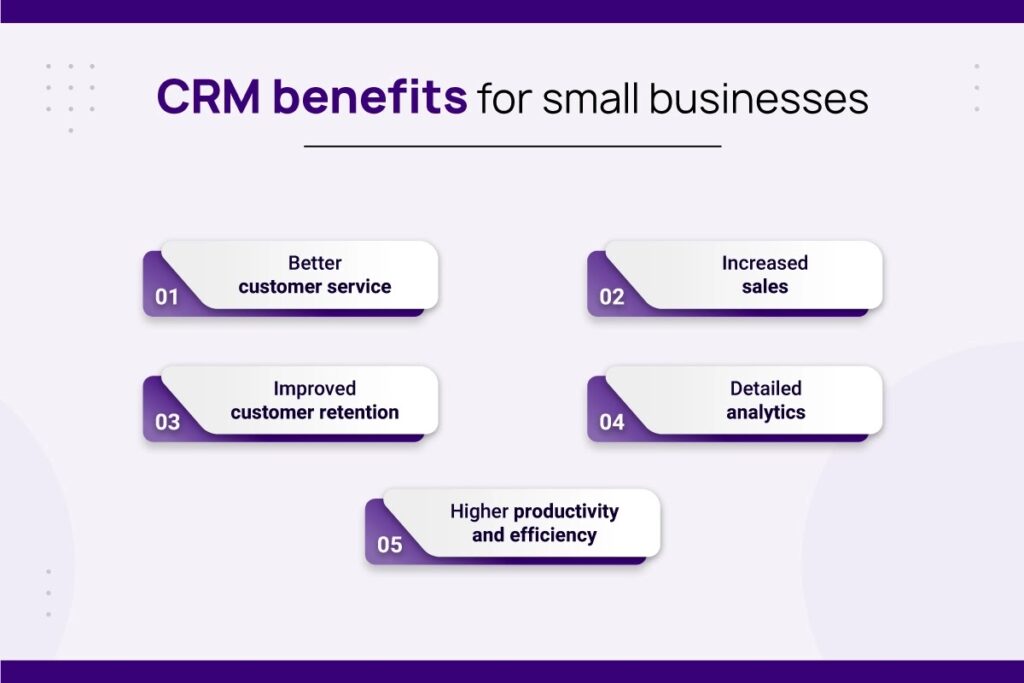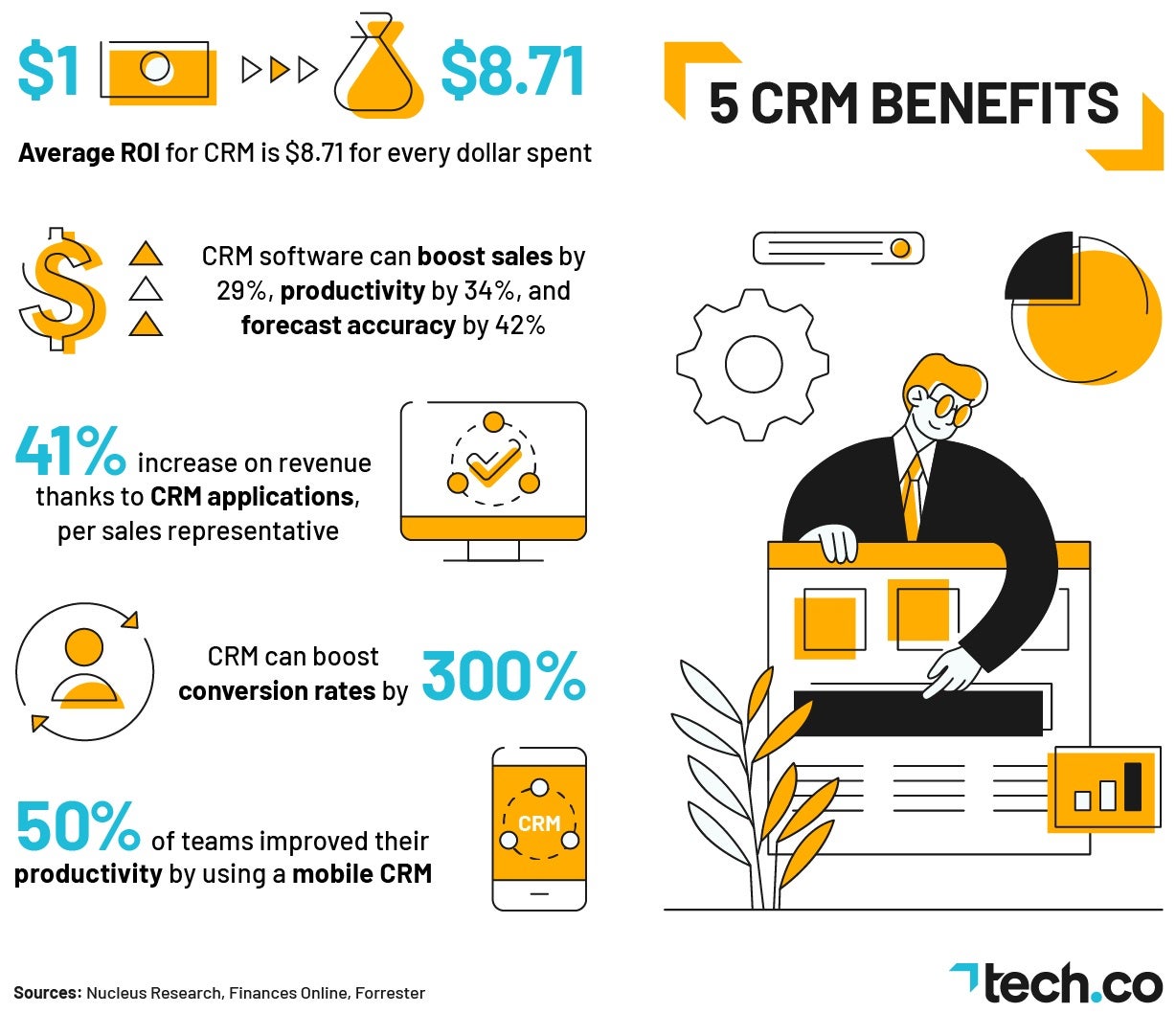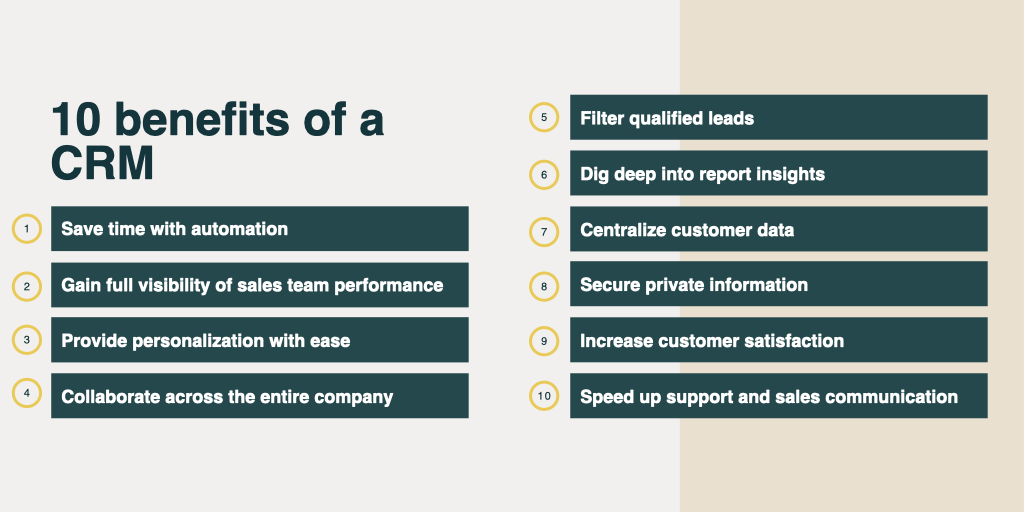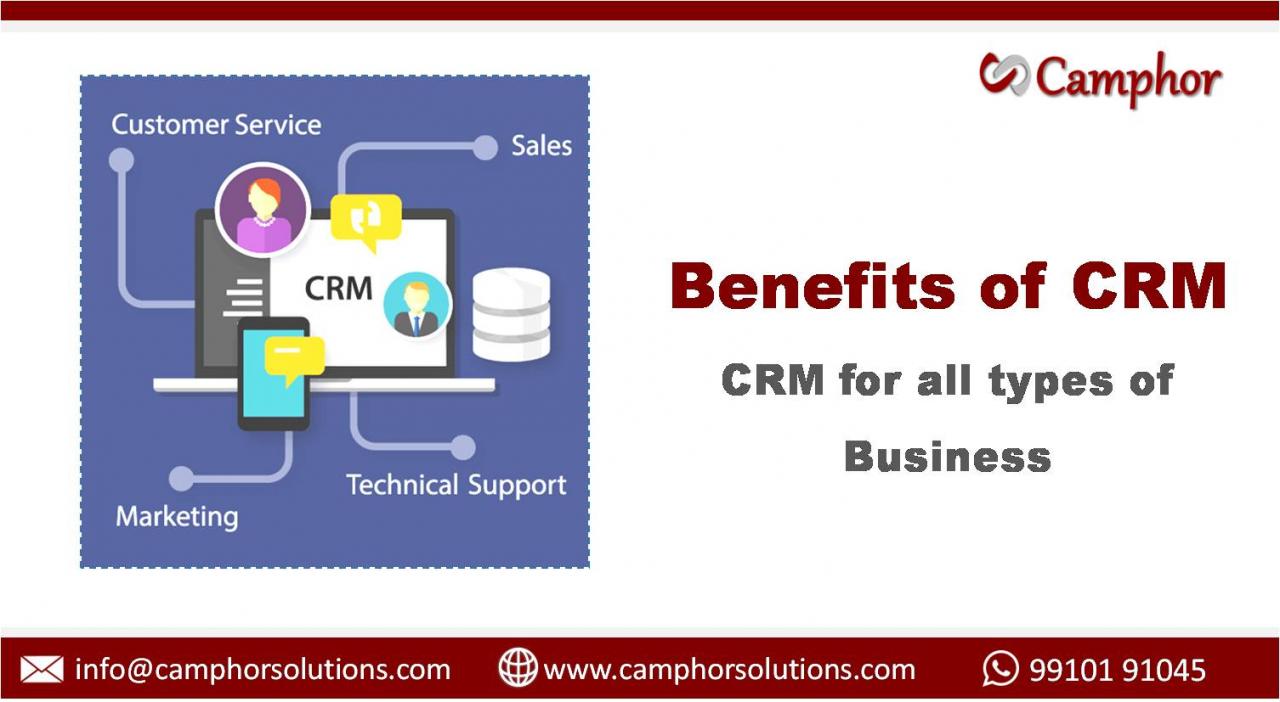Measuring the ROI of CRM investments and demonstrating business value is crucial for any business looking to maximize its return on investment. This isn’t just about crunching numbers; it’s about understanding how your CRM system directly impacts your bottom line and, even more importantly, your overall business success. We’ll dive deep into practical strategies, from defining the right KPIs to crafting compelling reports that showcase the true value of your CRM implementation.
Get ready to transform your CRM data into a powerful tool for growth!
This guide provides a comprehensive framework for measuring CRM ROI, covering everything from selecting relevant KPIs and collecting reliable data to employing effective attribution models and presenting compelling reports to stakeholders. We’ll explore both financial and non-financial benefits, showing how to quantify even the most intangible aspects of CRM success. Real-world examples and actionable advice will empower you to demonstrate the true value of your CRM investment and secure buy-in from even the most skeptical executives.
Defining Key Performance Indicators (KPIs) for CRM Success
Choosing the right Key Performance Indicators (KPIs) is crucial for demonstrating the value of your CRM investment. Without carefully selected metrics, you risk overlooking significant improvements or, worse, misinterpreting your CRM’s performance. Effective KPI selection allows for a data-driven approach to optimizing your CRM strategy and maximizing its return on investment.
Selecting the right KPIs requires a deep understanding of your business goals and how your CRM contributes to achieving them. It’s not a one-size-fits-all solution; the ideal KPIs will vary depending on your industry, business model, and the specific functionalities of your CRM system.
Key Performance Indicators for CRM ROI Measurement
Here are five essential KPIs to track the success of your CRM implementation and calculate its ROI. These metrics offer a comprehensive view of your CRM’s impact across various aspects of your business.
| KPI | Calculation | Data Source | Interpretation |
|---|---|---|---|
| Customer Acquisition Cost (CAC) | Total marketing and sales costs / Number of new customers acquired | Marketing automation tools, sales CRM, accounting software | Lower CAC indicates efficient customer acquisition. Compare this metric against industry benchmarks and track trends over time to assess the impact of CRM-driven improvements in lead generation and sales processes. |
| Customer Lifetime Value (CLTV) | Average purchase value x Average purchase frequency x Average customer lifespan | Sales data, CRM, customer behavior analytics | Higher CLTV demonstrates successful customer relationship management. Analyzing CLTV in conjunction with CAC helps determine the profitability of your customer base and the effectiveness of your CRM in driving customer loyalty. |
| Sales Conversion Rate | Number of closed deals / Number of qualified leads | Sales CRM, marketing automation | A higher conversion rate signifies effective sales processes. Track this KPI to identify bottlenecks in your sales funnel and assess the contribution of CRM features like lead scoring and sales automation. |
| Customer Churn Rate | Number of customers lost / Total number of customers | CRM, customer support system | A lower churn rate indicates improved customer retention. Analyze the reasons for churn identified within your CRM to proactively address customer concerns and improve customer satisfaction. |
| Return on Investment (ROI) | (Gain from investment – Cost of investment) / Cost of investment | Financial statements, CRM data, marketing reports | A positive ROI demonstrates that the CRM investment is generating a profit. This requires careful consideration of all costs associated with the CRM (software, implementation, training, maintenance) and the associated revenue increases or cost reductions it generates. For example, a 20% ROI signifies that for every dollar invested in the CRM, the business gained $1.20. |
Aligning KPIs with Business Objectives
The selected KPIs must directly contribute to the achievement of overarching business objectives. For instance, if a primary goal is to increase market share, relevant KPIs would include customer acquisition cost, sales conversion rate, and brand awareness metrics. If the focus is on improving profitability, then CLTV, customer churn rate, and ROI become crucial. The alignment process involves a thorough analysis of business goals, identifying the CRM’s role in achieving those goals, and selecting KPIs that accurately reflect progress.
Successfully measuring the ROI of CRM investments hinges on choosing the right platform. Understanding features and pricing is key, which is why comparing options like Salesforce and HubSpot is crucial. To help you make an informed decision and maximize your return, check out this detailed comparison: comparing salesforce vs hubspot CRM features and pricing plans. This will ultimately aid in demonstrating the business value of your CRM investment and ensuring a positive impact on your bottom line.
Challenges in KPI Selection and Implementation
Selecting and implementing suitable KPIs can present various challenges. Different CRM systems offer varying functionalities, impacting the data available for KPI calculation. Furthermore, different business models require different metrics. A subscription-based business, for example, might prioritize customer lifetime value and churn rate, while a project-based business might focus on sales conversion rates and project profitability. Inconsistent data quality across different systems can also hinder accurate KPI calculation.
Finally, the interpretation of KPIs requires careful consideration of context and industry benchmarks. A seemingly low conversion rate might be acceptable within a niche market with high average order values.
Data Collection and Analysis Methods for CRM Performance: Measuring The ROI Of CRM Investments And Demonstrating Business Value

Measuring the ROI of your CRM investment requires a robust data collection and analysis strategy. Accurate data is the cornerstone of effective ROI calculation, allowing you to demonstrate the true business value of your CRM system. Without reliable data, your ROI calculations will be unreliable, potentially leading to flawed business decisions. This section will explore various data collection methods and highlight best practices for data cleaning and preparation.
CRM Data Collection Methods
Choosing the right data collection method is crucial for accurate CRM performance measurement. Different methods offer varying strengths and weaknesses, impacting the quality and completeness of your data. The optimal approach often depends on your specific CRM system, business goals, and available resources.
- Direct Extraction from CRM Database: This involves directly querying your CRM database using SQL or similar tools to extract relevant data. This method offers high accuracy and allows for complex data manipulations. However, it requires technical expertise and can be time-consuming. It’s best suited for organizations with in-house data analysts or access to such resources.
- CRM Reporting and Analytics Tools: Most CRM systems offer built-in reporting and analytics dashboards. These tools provide pre-built reports and visualizations, simplifying data access. While convenient, these reports may lack the granularity needed for detailed ROI analysis and might be limited in customization. This approach is ideal for quick insights and general performance monitoring.
- Integration with Other Data Sources: Integrating your CRM data with other systems (e.g., marketing automation, sales platforms, e-commerce) can provide a more holistic view of customer interactions and business outcomes. This comprehensive approach allows for a more accurate picture of CRM impact but requires technical expertise to set up and maintain the integrations and might present data compatibility challenges.
Data Cleaning and Preparation Procedure
Raw CRM data is rarely ready for immediate analysis. A rigorous cleaning and preparation process is vital to ensure data accuracy and reliability in ROI calculations. This involves several key steps.
- Data Validation: Check for data inconsistencies, missing values, and outliers. For example, ensure that dates are correctly formatted, phone numbers follow a consistent pattern, and sales figures are within reasonable ranges.
- Data Standardization: Convert data into a consistent format. This might include standardizing date formats, currency conversions, and data type conversions. For example, ensuring all customer names are capitalized consistently or that all addresses are in a standard format.
- Data Cleaning: Address missing values and outliers. Missing values can be handled through imputation (replacing missing values with estimated values) or exclusion (removing records with missing data). Outliers can be removed or investigated to understand the cause.
- Data Transformation: Transform data into a format suitable for analysis. This might involve creating new variables, aggregating data, or converting data types. For example, grouping customers into segments based on their purchase history or calculating the average deal size.
Common Data Pitfalls and Mitigation Strategies
Several common data pitfalls can lead to inaccurate ROI measurements. Understanding these pitfalls and implementing appropriate mitigation strategies is crucial for reliable results.
- Inconsistent Data Entry: Inconsistent data entry can lead to inaccurate reporting and analysis. Implementing data entry validation rules and providing training to CRM users can minimize this problem. For example, a drop-down menu for selecting customer segments ensures consistency.
- Incomplete Data: Missing data can skew results and lead to inaccurate conclusions. Implementing data validation rules that prevent submission of incomplete records, and actively encouraging complete data entry can address this. For example, making fields mandatory to improve data completeness.
- Duplicate Records: Duplicate customer records can inflate metrics and distort analysis. Implementing data deduplication processes, such as using a unique identifier for each customer, can help avoid this. Regular data cleansing and deduplication processes should be scheduled.
Attribution Modeling and its Impact on CRM ROI

Understanding how your marketing efforts contribute to sales is crucial for maximizing your CRM investment. Attribution modeling helps you untangle this complex web, assigning credit for conversions across different touchpoints within your customer journey. By accurately assigning value, you can optimize your strategies and demonstrate a clear return on your CRM investment.
Attribution Model Comparison
Choosing the right attribution model significantly impacts your CRM ROI calculations. Different models assign credit differently, leading to varying results. The following table compares three common models: First-Click, Last-Click, and Multi-Touch.
| Model Name | Description | Advantages | Disadvantages |
|---|---|---|---|
| First-Click | Assigns 100% of the credit to the first interaction a customer had with your brand. | Simple to understand and implement; gives credit to initial awareness campaigns. | Overlooks the impact of subsequent interactions; may undervalue later-stage marketing efforts. |
| Last-Click | Attributes all credit to the final interaction before a conversion. | Easy to track and implement; aligns well with short sales cycles. | Ignores the influence of previous touchpoints; can misrepresent the effectiveness of top-of-funnel activities. |
| Multi-Touch | Distributes credit across multiple touchpoints based on a predefined algorithm (e.g., linear, time decay, position-based). | Provides a more holistic view of the customer journey; better reflects the reality of multi-channel marketing. | More complex to implement and analyze; requires robust data collection and sophisticated analytics. |
Implications of Inappropriate Attribution Model Selection, Measuring the ROI of CRM investments and demonstrating business value
Selecting an unsuitable attribution model can lead to inaccurate ROI calculations, potentially hindering strategic decision-making. For instance, relying solely on the last-click model might cause you to underinvest in brand-building activities that are crucial for driving initial awareness and generating leads, even though they don’t directly precede a conversion. Conversely, neglecting the last touchpoint in a first-click model could lead to underestimation of immediate conversion-driving activities.
This can result in misallocation of resources and a failure to optimize marketing spend for maximum impact. A company focusing solely on last-click attribution might cut its content marketing budget despite the fact that it’s responsible for generating high-quality leads further down the funnel.
Attribution Model Selection Based on Business Goals and CRM Capabilities
The optimal attribution model depends on your specific business goals and the capabilities of your CRM system. For example, a company focused on immediate sales might find the last-click model sufficient. However, a business prioritizing long-term brand building and nurturing leads would benefit from a multi-touch model, which offers a more comprehensive view of customer engagement. Consider the complexity of your customer journey, the level of data granularity available in your CRM, and your analytical resources when making your selection.
Measuring the ROI of your CRM investment and demonstrating its business value is crucial for long-term success. This requires choosing the right system from the start, which means carefully considering your future needs; finding a CRM solution that scales with business growth and expansion, like those discussed at finding a CRM solution that scales with business growth and expansion , is key.
Ultimately, a scalable CRM ensures your investment continues to pay off as your business expands, making ROI measurement straightforward and impactful.
A company with a simple sales process and limited data might opt for last-click attribution, while a company with a complex sales cycle and robust data infrastructure might benefit from a more sophisticated multi-touch model like a time-decay model which gives more weight to interactions closer to the conversion.
Calculating and Reporting CRM Return on Investment
Calculating the return on investment (ROI) for your CRM system isn’t just about crunching numbers; it’s about demonstrating the tangible value it brings to your business. A well-calculated ROI justifies the investment and helps secure future funding for CRM enhancements and expansion. This section provides a practical guide to calculating and reporting your CRM ROI effectively.
CRM ROI Calculation: A Step-by-Step Guide
Calculating CRM ROI requires a systematic approach. Begin by identifying your initial investment and then track the benefits derived from the CRM implementation. The following steps Artikel the process:
- Determine the Total Investment: This includes the initial software license fees, implementation costs (consulting, customization, data migration), ongoing maintenance fees, and employee training expenses. For example, a total investment might be $50,000.
- Identify Measurable Benefits: These benefits should align with your pre-defined KPIs. Examples include increased sales revenue, reduced customer acquisition costs, improved customer retention rates, and increased efficiency in sales and marketing processes. Quantify these benefits using concrete data.
- Calculate the Return: This step involves translating the benefits into monetary terms. For instance, a 10% increase in sales revenue from a $1 million baseline translates to a $100,000 return.
- Calculate the ROI: The basic formula for ROI is:
(Net Return – Total Investment) / Total Investment
100%
Using the example above
($100,000 – $50,000) / $50,000
100% = 100%
This indicates a 100% return on investment.
Illustrative Example of CRM ROI Calculation
Let’s consider a hypothetical scenario where a company invests $20,000 in a new CRM system. Before implementation, their average deal size was $5,000, and they closed 10 deals per month. Post-implementation, their average deal size increased to $6,000, and they closed 12 deals per month.
- Increased Revenue: (12 deals
– $6,000)
-(10 deals
– $5,000) = $72,000 – $50,000 = $22,000 - ROI Calculation: ($22,000 – $20,000) / $20,000
– 100% = 10%
This example demonstrates a 10% ROI within a year, highlighting the financial benefit of the CRM investment.
Creating a Visually Appealing CRM ROI Report
Presenting your findings effectively is crucial. A well-structured report should clearly communicate the ROI achieved.
- Executive Summary: Briefly summarize the key findings, including the total investment, calculated ROI, and significant improvements.
- Methodology: Explain the methods used to calculate the ROI, including the KPIs and data sources. Transparency is key.
- Results: Present the quantitative data in clear tables and charts, comparing pre- and post-implementation metrics. Use visuals like bar graphs to show the increase in sales, customer retention, etc.
- Financial and Non-Financial Returns: Clearly separate and present both types of returns. For instance, a chart showing increased revenue alongside a description of improved customer satisfaction scores.
- Recommendations: Suggest further improvements or areas for optimization based on the analysis.
A sample report might include a table showing key metrics like customer acquisition cost, customer lifetime value, and sales conversion rates, before and after CRM implementation, followed by a chart illustrating the overall ROI percentage. The report should be concise and visually engaging, making the data easily digestible for stakeholders.
Demonstrating the Business Value Beyond Financial Metrics

While a strong financial ROI is crucial for justifying CRM investment, focusing solely on numbers overlooks the significant non-financial benefits that contribute to long-term business success. A holistic view encompassing both quantitative and qualitative data paints a more complete picture of the CRM’s impact, making a more compelling case to stakeholders.
Beyond the bottom line, a successful CRM implementation delivers tangible improvements across various business aspects. Quantifying these benefits, often less easily measured than revenue increases, is key to demonstrating the overall value proposition.
Non-Financial Benefits of CRM Implementation
Quantifying non-financial benefits requires a strategic approach, focusing on measurable indicators that reflect the impact of the CRM on key business processes. The following examples illustrate how to translate intangible advantages into concrete data points.
- Improved Customer Satisfaction: Measure customer satisfaction using pre- and post-implementation surveys. For example, a company might show a 15% increase in customer satisfaction scores (measured on a 1-5 scale) after CRM implementation, demonstrating improved customer service responsiveness and personalization. This improvement can be directly linked to the CRM’s features, such as automated responses, personalized email campaigns, and centralized customer data.
- Increased Sales Team Efficiency: Track metrics like average deal closure time, number of deals closed per representative, and sales cycle length. A company might observe a 10% reduction in average deal closure time after CRM implementation, indicating improved lead management and sales process optimization. This can be attributed to features like automated lead routing, streamlined communication tools, and readily available customer history within the CRM.
- Enhanced Employee Engagement: Conduct employee satisfaction surveys focusing on aspects related to CRM usage. For instance, a company might see a 12% increase in employee satisfaction related to sales tools after CRM implementation, reflecting a positive impact on team morale and productivity due to improved workflows and access to information. This could be further supported by internal feedback surveys focusing on ease of use and the time saved using the CRM’s features.
Incorporating Qualitative Data into ROI Assessment
While quantitative data provides concrete numbers, qualitative data adds crucial context and depth to the overall ROI assessment. Customer feedback, employee testimonials, and case studies provide valuable insights into the CRM’s impact on customer relationships and internal processes.
Integrating qualitative data involves analyzing customer satisfaction surveys, conducting focus groups with employees and customers, and reviewing internal feedback mechanisms. This information helps to contextualize the quantitative data, explaining
-why* certain metrics have improved. For instance, positive customer feedback about personalized service directly linked to CRM-driven targeted campaigns strengthens the argument for the CRM’s positive impact on customer loyalty and retention.
Communicating CRM Value to Short-Term Focused Stakeholders
To effectively communicate the value of CRM to stakeholders focused on short-term financial results, present a balanced scorecard approach that highlights both immediate and long-term benefits. Emphasize how improvements in efficiency and customer satisfaction translate into future financial gains.
For example, demonstrate how reduced customer churn due to improved service (a non-financial benefit) translates into increased customer lifetime value and ultimately higher revenue in the long run. Visual aids like graphs and charts comparing pre- and post-implementation metrics can make the data more accessible and persuasive. A clear and concise presentation emphasizing the strategic value of CRM as an investment in future growth will be essential.
Case Studies

Understanding how CRM investments translate into tangible business value is crucial. The following case studies illustrate successful CRM ROI measurement and demonstrate the diverse ways businesses can leverage CRM data to improve their bottom line and achieve strategic goals. They highlight the importance of meticulous planning, accurate data collection, and a robust attribution model.
Case Study 1: Boosting Sales Conversion Rates at “GreenThumb Gardens”
GreenThumb Gardens, a national landscaping company, implemented a new CRM system to improve lead management and sales conversion. Prior to the CRM implementation, sales conversion rates hovered around 15%. After six months of using the CRM, including targeted email campaigns and improved sales follow-up, conversion rates jumped to 28%.
This success was driven by several key factors. The company meticulously tracked all leads through the sales funnel, from initial contact to closed deals. This allowed for a clear understanding of which marketing channels were most effective and which stages of the sales process needed improvement. The CRM’s automated email sequences ensured timely follow-up with potential clients, preventing leads from falling through the cracks.
Furthermore, sales representatives had access to a centralized database of client information, allowing them to personalize their interactions and build stronger relationships.The initial challenge was integrating the new CRM with their existing marketing automation platform. This required significant technical expertise and coordination between IT and marketing teams. The team overcame this by allocating sufficient time and resources to the integration process and providing comprehensive training to all staff members.
Data migration from the old system also posed a challenge; however, careful planning and data cleansing ensured a smooth transition.
Case Study 2: Enhancing Customer Retention at “CozyKnit Creations”
CozyKnit Creations, an online retailer of handcrafted knitwear, utilized their CRM to identify and address customer churn. By analyzing purchase history, website activity, and customer service interactions, they identified a segment of customers who were less engaged. Through targeted loyalty programs and personalized email marketing, they saw a 12% reduction in customer churn within a year. This translated to a significant increase in repeat business and overall revenue.
The key to CozyKnit Creations’ success lay in their ability to segment their customer base and tailor their communication strategies accordingly. They leveraged the CRM’s analytical capabilities to identify at-risk customers and proactively engage them. This included offering exclusive discounts, personalized product recommendations, and improved customer service support. The CRM also facilitated the creation of targeted marketing campaigns, allowing them to reach specific customer segments with relevant messaging.The main challenge for CozyKnit Creations was the initial lack of comprehensive customer data.
Many customers had incomplete profiles, making segmentation and targeted marketing difficult. They addressed this by implementing a data enrichment strategy, integrating the CRM with their e-commerce platform to automatically collect customer data and proactively encouraging customers to complete their profiles. They also implemented a feedback mechanism to gather customer insights and improve their overall service.